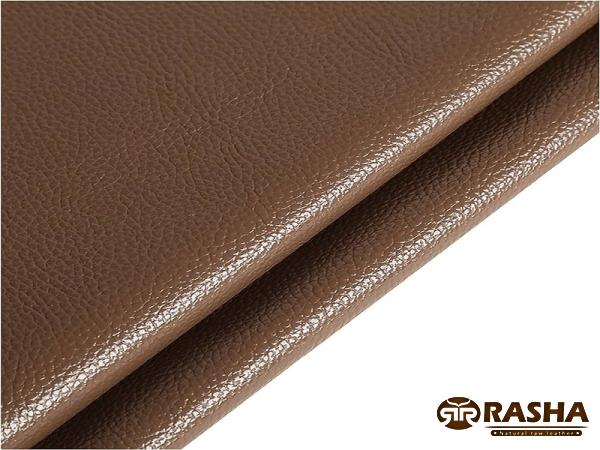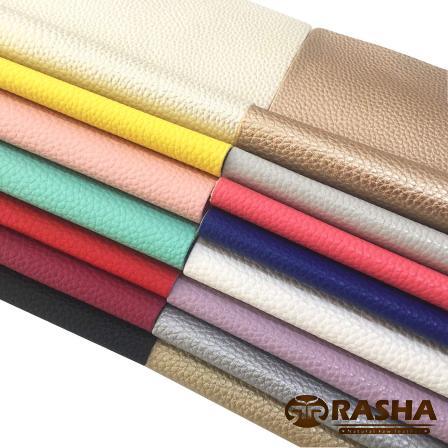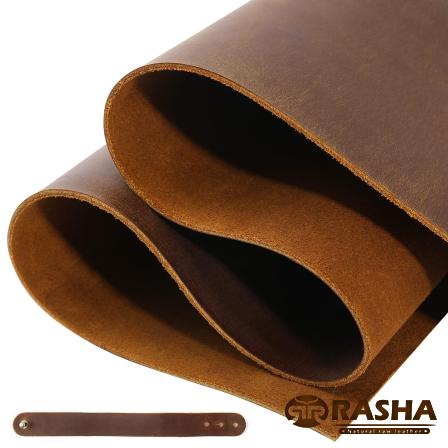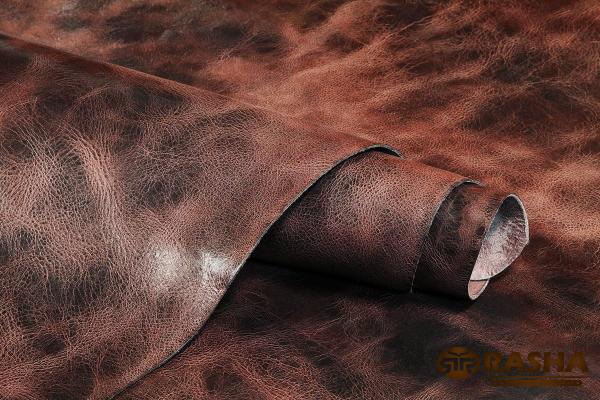Leather has long been associated with luxury, elegance, and durability, making it a popular choice for sofas. In this article, we will explore the various aspects of leather sheets for sofas, including the different types of leather, their benefits, and considerations for choosing the right leather sheet for your sofa. Whether you’re a furniture manufacturer, retailer, or a consumer looking to purchase a sofa, this guide will equip you with the knowledge necessary to make informed decisions. Understanding Leather Sheets for Sofas: 1. Types of Leather: a. Full Grain Leather: Considered the highest quality, full grain leather retains the natural texture and markings of the animal hide, providing a unique and authentic look. It is known for its durability and develops a beautiful patina over time. b. Top Grain Leather: The second highest quality, top grain leather is sanded down to remove imperfections, resulting in a smooth and uniform appearance. It is durable and retains some breathability. c. Split Leather: Derived from the lower layers of the hide, split leather is less durable and often used for less visible parts of a sofa. It can be coated or finished to mimic the appearance of top grain leather. d. Bonded Leather: Made from shredded leather scraps bonded together with adhesive, bonded leather is an affordable option that lacks the durability and natural look of other types of leather. 2. Factors to Consider: a. Durability: Full grain and top grain leather are the most durable options, known to withstand everyday use, including scratching, spills, and general wear and tear, while maintaining their appearance. b. Moisture Resistance: Leather naturally repels liquid, making it easier to clean and maintain. However, full grain and top grain leather offer greater resistance to moisture compared to split and bonded leather. c. Comfort: Leather provides a comfortable and cozy feel, especially full grain and top grain leather, which also allow some breathability, preventing the sofa from feeling too hot or sticky. d. Aesthetic Appeal: Leather sheets for sofas are available in various colors, finishes, and textures, allowing you to choose the one that best complements your interior design style. 3. Benefits of Leather Sheets for Sofas: a. Longevity: Compared to fabric upholstery, leather is generally more resilient, lasting for years and often improving with age. b. Easy Maintenance: Leather is easy to clean and maintain, as spills can be wiped away quickly. Regular dusting and conditioning can keep the leather looking fresh and prevent it from drying out or cracking. c. Allergen Reduction: Leather does not attract common household allergens like dust mites, making it a suitable option for individuals with allergies or asthma.

leather
 d. Timeless Design: Leather sofas add a touch of sophistication and elegance to any space, and they can effortlessly integrate with different interior styles. Choosing the Right Leather Sheet: 1. Consider Your Lifestyle: a. Family-Friendly: If you have children or pets, opt for a leather sheet that is more resistant to scratches and spills, such as full grain or top grain leather. b. Low Maintenance: If you prefer a sofa that requires minimal upkeep, choose a leather that is easy to clean and does not require frequent conditioning, such as top grain or bonded leather. 2. Evaluate Your Budget: a. Full Grain Leather: While expensive, full grain leather offers unmatched durability and a timeless aesthetic, making it a worthwhile investment for those seeking long-term quality. b. Top Grain Leather: A slightly more affordable option than full grain leather, top grain leather provides similar durability and style. c. Split and Bonded Leather: These options are significantly more affordable but are also less durable and may not offer the same luxurious appearance as full or top grain leather. 3. Test the Leather: a. Texture: Feel the leather’s texture to ensure it meets your preferences in terms of softness, smoothness, or a more rugged appearance. b. Smell: Genuine leather emits a distinctive smell that can help you determine its authenticity. c. Flexibility: Examine the leather’s flexibility by gently bending it to check for cracking or peeling. High-quality leather should maintain its shape and show minimal signs of wear. Conclusion: Leather sheets for sofas offer a desirable combination of durability, comfort, and aesthetic appeal. Understanding the different types of leather, their benefits, and factors to consider is essential when choosing the right leather sheet for your sofa. By taking into account your lifestyle, budget, and testing the leather’s quality, you can make an informed decision that ensures your sofa’s longevity and enhances the overall ambiance of your living space. I. The Leather Industry and Market Trends The leather industry is a crucial sector in the global economy, with the market for leather products witnessing continuous growth. According to industry reports, the global market for leather goods reached a value of $414 billion in 2020 and is expected to grow at a CAGR of 5.4% from 2021 to 2028. Within this market, leather sofas hold a significant share, reflecting their timeless appeal and demand for luxury furniture. II. Branding and Reputation: Building Trust in the Leather Industry Establishing a strong brand and maintaining a positive reputation is essential for businesses in the leather industry. Customers are increasingly conscious of sustainability, ethical sourcing, and product quality.
d. Timeless Design: Leather sofas add a touch of sophistication and elegance to any space, and they can effortlessly integrate with different interior styles. Choosing the Right Leather Sheet: 1. Consider Your Lifestyle: a. Family-Friendly: If you have children or pets, opt for a leather sheet that is more resistant to scratches and spills, such as full grain or top grain leather. b. Low Maintenance: If you prefer a sofa that requires minimal upkeep, choose a leather that is easy to clean and does not require frequent conditioning, such as top grain or bonded leather. 2. Evaluate Your Budget: a. Full Grain Leather: While expensive, full grain leather offers unmatched durability and a timeless aesthetic, making it a worthwhile investment for those seeking long-term quality. b. Top Grain Leather: A slightly more affordable option than full grain leather, top grain leather provides similar durability and style. c. Split and Bonded Leather: These options are significantly more affordable but are also less durable and may not offer the same luxurious appearance as full or top grain leather. 3. Test the Leather: a. Texture: Feel the leather’s texture to ensure it meets your preferences in terms of softness, smoothness, or a more rugged appearance. b. Smell: Genuine leather emits a distinctive smell that can help you determine its authenticity. c. Flexibility: Examine the leather’s flexibility by gently bending it to check for cracking or peeling. High-quality leather should maintain its shape and show minimal signs of wear. Conclusion: Leather sheets for sofas offer a desirable combination of durability, comfort, and aesthetic appeal. Understanding the different types of leather, their benefits, and factors to consider is essential when choosing the right leather sheet for your sofa. By taking into account your lifestyle, budget, and testing the leather’s quality, you can make an informed decision that ensures your sofa’s longevity and enhances the overall ambiance of your living space. I. The Leather Industry and Market Trends The leather industry is a crucial sector in the global economy, with the market for leather products witnessing continuous growth. According to industry reports, the global market for leather goods reached a value of $414 billion in 2020 and is expected to grow at a CAGR of 5.4% from 2021 to 2028. Within this market, leather sofas hold a significant share, reflecting their timeless appeal and demand for luxury furniture. II. Branding and Reputation: Building Trust in the Leather Industry Establishing a strong brand and maintaining a positive reputation is essential for businesses in the leather industry. Customers are increasingly conscious of sustainability, ethical sourcing, and product quality.
Specifications of leather
 1. Sustainability and Ethical Sourcing: – Employing sustainable practices, such as using eco-friendly tanning processes and sourcing leather from responsibly managed farms, enhances a brand’s reputation and attracts customers who prioritize ethical consumption. – Highlighting the use of chrome-free tanning methods and offering traceability of the leather’s origin can demonstrate commitment to sustainability. 2. Quality Assurance: – Implementing rigorous quality control measures throughout the production process ensures that customers receive leather sheets of the highest standard. – Certifications, such as the Leather Working Group (LWG) certification, validate adherence to quality and environmental standards. III. Collaborating with Designers and Manufacturers Collaborating with designers and manufacturers can offer significant benefits in the leather industry. By partnering with experienced professionals, businesses can access their expertise, creativity, and existing customer base. 1. Designers: – Collaborating with designers allows businesses to create unique leather sheets that cater to specific market trends and consumer preferences. – Designers bring fresh perspectives, innovative ideas, and attention to detail, resulting in leather products that stand out in terms of aesthetics and functionality. 2. Manufacturers: – Partnering with reliable manufacturers ensures the production of high-quality leather sheets that meet industry standards and customer expectations. – Selecting manufacturers with efficient production processes enables timely delivery and cost-effectiveness. IV. Online Presence and E-commerce In today’s digital age, establishing an online presence is crucial for businesses in the leather industry. Online retail and e-commerce present opportunities to reach a broader customer base, improve brand visibility, and increase sales. 1. Building an E-commerce Website: – Creating a user-friendly website with clear product descriptions, high-resolution images, and secure payment options helps customers make informed purchasing decisions. – Offering a seamless online shopping experience, including easy navigation and responsive customer service, enhances customer satisfaction and encourages repeat business. 2. Social Media Marketing: – Harnessing the power of social media platforms, such as Facebook, Instagram, and Pinterest, allows businesses to showcase their leather sheets and interact directly with customers. – Engaging content, influencer collaborations, and targeted advertisements can increase brand awareness and drive traffic to the e-commerce website. V. Customer Service and After-Sales Support Providing exceptional customer service and after-sales support is paramount in the leather industry. Satisfied customers not only become repeat buyers but also serve as brand advocates. 1. Prompt and Professional Communication: – Timely responses to customer queries and providing accurate information about products and services demonstrate the brand’s commitment to customer satisfaction. – Offering multiple communication channels, such as phone, email, and live chat, ensures customers can reach out conveniently.
1. Sustainability and Ethical Sourcing: – Employing sustainable practices, such as using eco-friendly tanning processes and sourcing leather from responsibly managed farms, enhances a brand’s reputation and attracts customers who prioritize ethical consumption. – Highlighting the use of chrome-free tanning methods and offering traceability of the leather’s origin can demonstrate commitment to sustainability. 2. Quality Assurance: – Implementing rigorous quality control measures throughout the production process ensures that customers receive leather sheets of the highest standard. – Certifications, such as the Leather Working Group (LWG) certification, validate adherence to quality and environmental standards. III. Collaborating with Designers and Manufacturers Collaborating with designers and manufacturers can offer significant benefits in the leather industry. By partnering with experienced professionals, businesses can access their expertise, creativity, and existing customer base. 1. Designers: – Collaborating with designers allows businesses to create unique leather sheets that cater to specific market trends and consumer preferences. – Designers bring fresh perspectives, innovative ideas, and attention to detail, resulting in leather products that stand out in terms of aesthetics and functionality. 2. Manufacturers: – Partnering with reliable manufacturers ensures the production of high-quality leather sheets that meet industry standards and customer expectations. – Selecting manufacturers with efficient production processes enables timely delivery and cost-effectiveness. IV. Online Presence and E-commerce In today’s digital age, establishing an online presence is crucial for businesses in the leather industry. Online retail and e-commerce present opportunities to reach a broader customer base, improve brand visibility, and increase sales. 1. Building an E-commerce Website: – Creating a user-friendly website with clear product descriptions, high-resolution images, and secure payment options helps customers make informed purchasing decisions. – Offering a seamless online shopping experience, including easy navigation and responsive customer service, enhances customer satisfaction and encourages repeat business. 2. Social Media Marketing: – Harnessing the power of social media platforms, such as Facebook, Instagram, and Pinterest, allows businesses to showcase their leather sheets and interact directly with customers. – Engaging content, influencer collaborations, and targeted advertisements can increase brand awareness and drive traffic to the e-commerce website. V. Customer Service and After-Sales Support Providing exceptional customer service and after-sales support is paramount in the leather industry. Satisfied customers not only become repeat buyers but also serve as brand advocates. 1. Prompt and Professional Communication: – Timely responses to customer queries and providing accurate information about products and services demonstrate the brand’s commitment to customer satisfaction. – Offering multiple communication channels, such as phone, email, and live chat, ensures customers can reach out conveniently.
buy leather
 2. Warranty and Return Policies: – Providing transparent warranty and return policies instills confidence in customers, mitigates any concerns about product quality, and ultimately leads to higher customer satisfaction. – Resolving any issues quickly and fairly strengthens the brand’s reputation and fosters long-term customer loyalty. VI. Leather Maintenance and Care Guides Educating customers on proper leather maintenance and care is essential to prolonging the lifespan of leather sofas and maintaining their aesthetic appeal. 1. Cleaning and Spills: – Providing detailed instructions on how to clean leather sheets, remove stains, and handle spills helps customers maintain the appearance of their sofas. – Recommending specific leather cleaning products, such as mild soap or specialized leather cleaners, ensures customers have the necessary tools to care for their sofas. 2. Conditioning and Protection: – Educating customers about the importance of regular leather conditioning and the use of protective sprays or creams helps prevent drying, cracking, and fading. – Offering recommendations for suitable leather conditioners and protectants strengthens the relationship between brands and customers and reinforces the brand’s expertise in leather care. VII. Customer Satisfaction Surveys and Feedback Gathering customer feedback through surveys and reviews enables businesses to identify areas for improvement, enhance customer satisfaction, and make informed business decisions. 1. Online Surveys: – Conducting online surveys allows businesses to collect feedback on product quality, customer service, and overall shopping experience. – Asking specific questions, such as satisfaction with leather quality or suggestions for new designs, helps businesses better understand customer preferences and expectations. 2. Reviews and Testimonials: – Encouraging customers to leave reviews and testimonials on websites and platforms helps build social proof and credibility. – Analyzing customer reviews provides valuable insights into areas that require improvement, as well as strengths that can be leveraged for marketing purposes. Conclusion: The leather industry is a dynamic and growing sector, driven by timeless appeal, durability, and customer demand for high-quality products. With a focus on sustainability, collaboration with designers and manufacturers, effective e-commerce strategies, exceptional customer service, and education on leather care, businesses in the leather industry can establish a strong brand presence, cultivate customer loyalty, and thrive in this competitive market.
2. Warranty and Return Policies: – Providing transparent warranty and return policies instills confidence in customers, mitigates any concerns about product quality, and ultimately leads to higher customer satisfaction. – Resolving any issues quickly and fairly strengthens the brand’s reputation and fosters long-term customer loyalty. VI. Leather Maintenance and Care Guides Educating customers on proper leather maintenance and care is essential to prolonging the lifespan of leather sofas and maintaining their aesthetic appeal. 1. Cleaning and Spills: – Providing detailed instructions on how to clean leather sheets, remove stains, and handle spills helps customers maintain the appearance of their sofas. – Recommending specific leather cleaning products, such as mild soap or specialized leather cleaners, ensures customers have the necessary tools to care for their sofas. 2. Conditioning and Protection: – Educating customers about the importance of regular leather conditioning and the use of protective sprays or creams helps prevent drying, cracking, and fading. – Offering recommendations for suitable leather conditioners and protectants strengthens the relationship between brands and customers and reinforces the brand’s expertise in leather care. VII. Customer Satisfaction Surveys and Feedback Gathering customer feedback through surveys and reviews enables businesses to identify areas for improvement, enhance customer satisfaction, and make informed business decisions. 1. Online Surveys: – Conducting online surveys allows businesses to collect feedback on product quality, customer service, and overall shopping experience. – Asking specific questions, such as satisfaction with leather quality or suggestions for new designs, helps businesses better understand customer preferences and expectations. 2. Reviews and Testimonials: – Encouraging customers to leave reviews and testimonials on websites and platforms helps build social proof and credibility. – Analyzing customer reviews provides valuable insights into areas that require improvement, as well as strengths that can be leveraged for marketing purposes. Conclusion: The leather industry is a dynamic and growing sector, driven by timeless appeal, durability, and customer demand for high-quality products. With a focus on sustainability, collaboration with designers and manufacturers, effective e-commerce strategies, exceptional customer service, and education on leather care, businesses in the leather industry can establish a strong brand presence, cultivate customer loyalty, and thrive in this competitive market.










Your comment submitted.